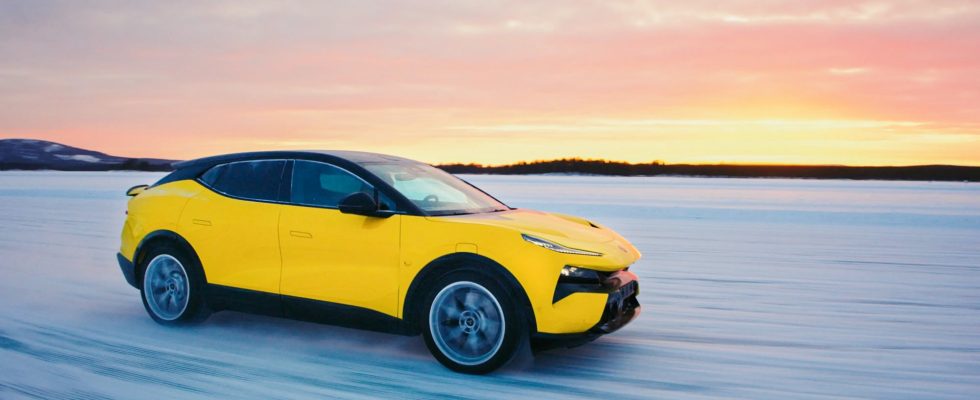The classic British sports car brand Lotus has been owned by Chinese Geely for a few years now, and one of the new owners’ ventures is the electric car Eletre.
It is not about a low, two-seater sports car, but about something so atypical for the brand as a giant SUV weighing over 2.5 tons.
That’s how long the battery lasts in your electric car
Will do like Porsche
A car that deviates from the brand’s ethos to such a mild degree may seem like sacrilege, but basically it’s like the company has had to adapt to prevailing trends in order to survive.
If you look at Geely’s success story with Volvo, you also realize that the group has a good CV when it comes to rescuing faltering car brands.
Eletre will do for Lotus what Cayenne did for Porsche – Photo: Marcus Berggren
The hope is that the Eletre will do for Lotus what the Cayenne did for Porsche in the early 2000s, namely to attract a new target group with an everyday-friendly SUV with a classic sports car badge on the hood. This, in turn, will finance continued production of sports cars.
Complicate, then add weight
Already at the first meeting with the Lotus Eletre, it is obvious that the car does not follow Colin Chapman’s classic saying “simplify, then add lightness”, but rather does the opposite.
The car is not only heavy, but also packed with digital systems and functions that feel unnecessarily complicated. For example, the car has somewhere between five and ten cameras on the outside.
As in many modern cars, most of these functions are hidden behind countless layers of menus on the interior displays.
In the middle of the crisis: Polestar notifies 450 people
Buggy worse
The countless systems also do not appear to be fully developed, which may however be due to the fact that our test car was a pre-series car.
For example, sometimes neither the adaptive cruise control nor the automatic dimming of the headlights worked, completely without the car informing about why.
It turned out that the problem was a dirty lidar sensor. This can be cleaned with a simple push of a button, but the function requires the car to be stationary with the car in the P position.
The interior is really well put together – Photo: Lotus
In order for the systems to work during a long journey on slushy, Swedish winter roads, you therefore have to stop repeatedly, which in the long run becomes incredibly annoying.
The MMI system is also poorly translated into Swedish, the voice control is completely unusable, and the car sometimes pings and pings without the driver understanding what it wants.
A solid build
Better, on the other hand, is the build quality of the interior, which consistently maintains phenomenal quality, even if some design choices are a bit clumsy.
All the controls feel so nice that it’s honestly a shame that so much of the communication with the car’s systems is done through the touch screen.
Some mistakes have been made, such as the door handles being covered in alcantara, which has a tendency to become stale over time. As a whole, however, the interior maintains a quality that can certainly compete with exclusive brands such as Porsche.
The Porsche summit: The ban on fossil fuel cars can be postponed
Convinces for everyday life
If you ignore the bugs, the Lotus Eletre also convinces as an everyday car.
Details that are appreciated are the comfortable step, a well-functioning head-up display and the incredibly quick charging. Despite freezing temperatures, we several times reached a charging power of over 300 kW.
Lotus Eletre is a real piece – Photo: Marcus Berggren
Also appreciated is the air suspension, which sorts out both small and large bumps at least as well as the competitors from Germany, and together with the active noise reduction in the cabin provides an incredibly quiet and comfortable driving experience.
Less appreciated is that the tailgate does not open far enough, which means that people of normal height have to duck to access the trunk.
Hides its weight
However, the most important thing about a Lotus can be considered to be how it behaves during more active driving.
Weighing in at over 2.5 tonnes, the car can be compared to an elephant as much as a traditional Lotus, but the engineers have done their job and the car hides its weight better than other electric SUVs.
Behind the wheel, you don’t notice the car’s enormous weight – Photo: Marcus Berggren
A contributing factor to this is the very nimble and precise steering, which however does not convey much in terms of feel.
Our test example of the car was a Lotus Eletre S with just over 600 horsepower. A faster version called Eletre R with a whopping 900 horsepower is also available.
A convincing debut
As a whole, Lotus’s first SUV Eletre impresses on several points, and the main merits are the handling and ride comfort, which bode well for the brand’s future electric cars.
However, the fact that so many systems do not work as they should gives the impression that the car has been rushed to the market before it is really ready.
With the Eletre, Lotus makes a convincing debut in the SUV world – Photo: Marcus Berggren
The many mistakes seriously disturb the overall impression, but should in most cases be remedied by updated software.
So far, however, the Lotus Eletre is pretty much alone in its segment, and as long as that’s the case, perhaps customers can forgive a certain number of quirks.
The experts sound the alarm: Sweden has too few electric car chargers
Overall impression of Lotus Eletre: 3/5
Lotus Eletre S (2024)
Engine: Two electric motors, 612 horsepower, 710 newton meters
Transmission: Single-stage power transmission, four-wheel drive
Acceleration 0-100 km/h: 4.5 seconds
Top speed: 260 km/h
Electrical range: 600 km
Weight: 2,565 kg
Dimensions (length/width/height): 5103/2135/1630 mm
Award: SEK 1,492,400
